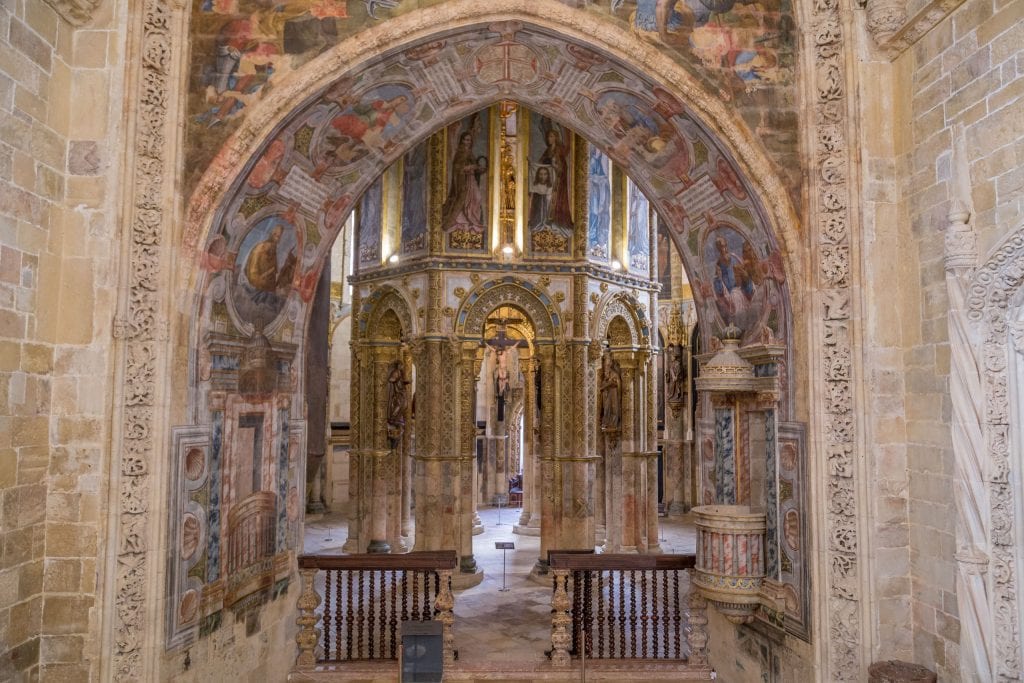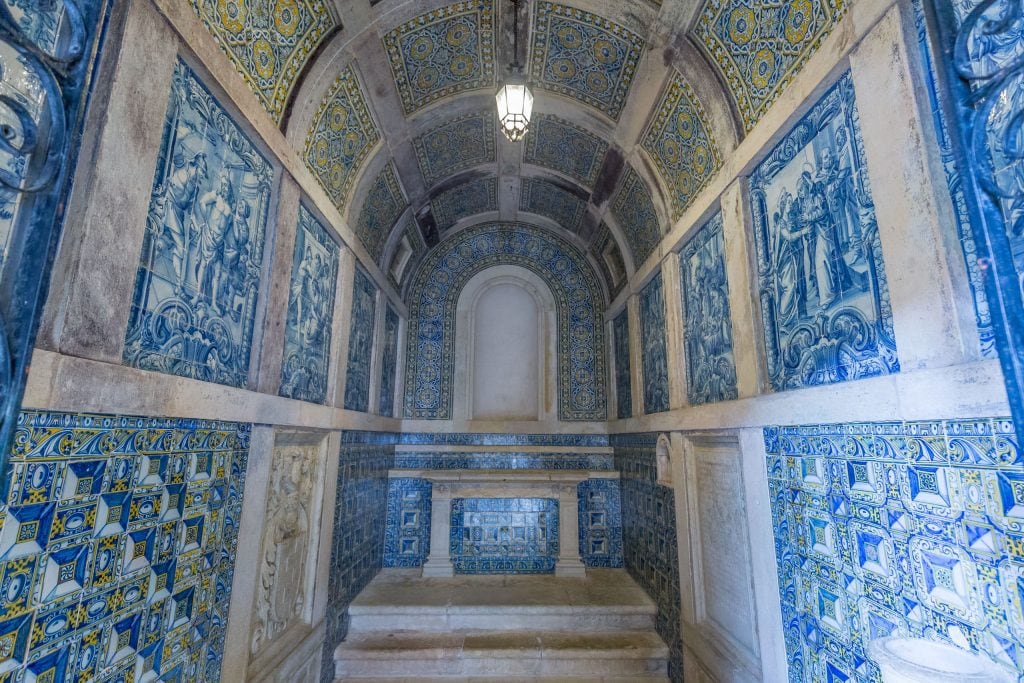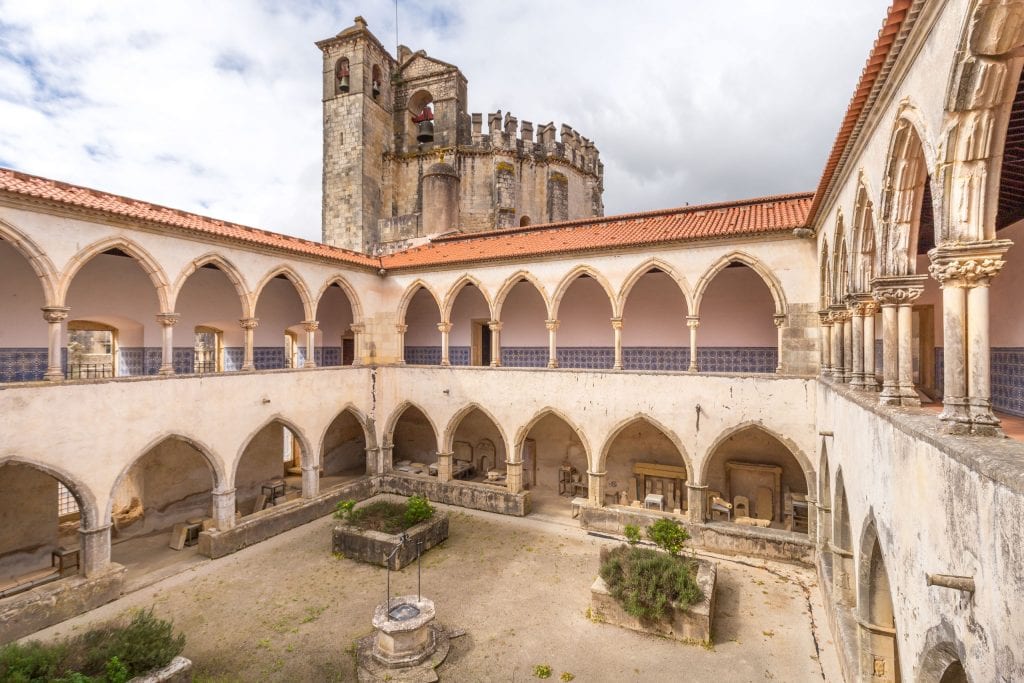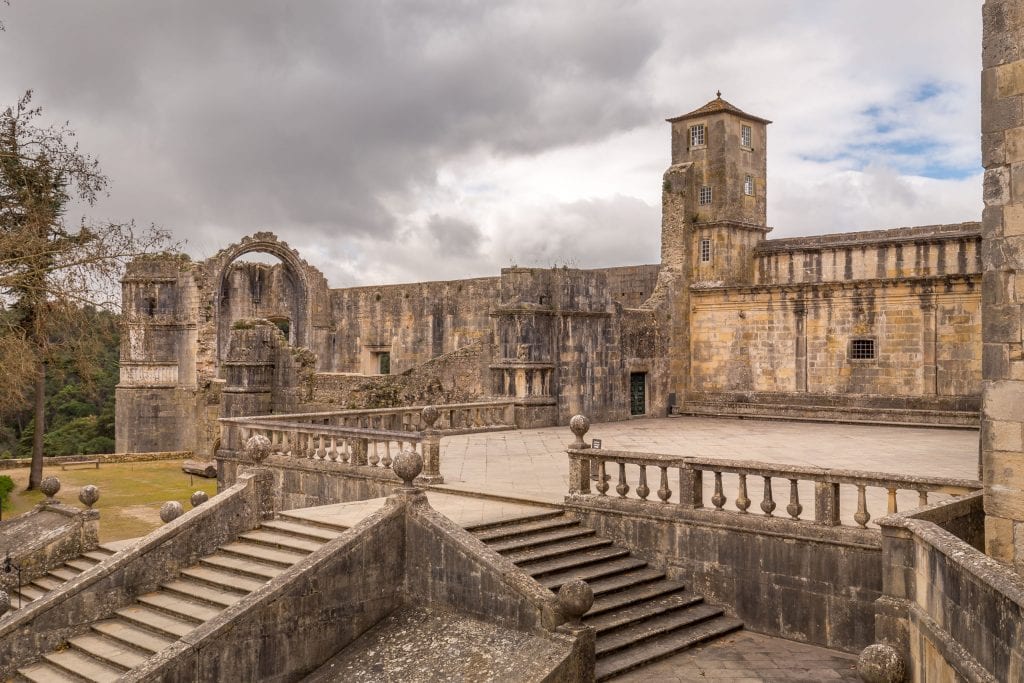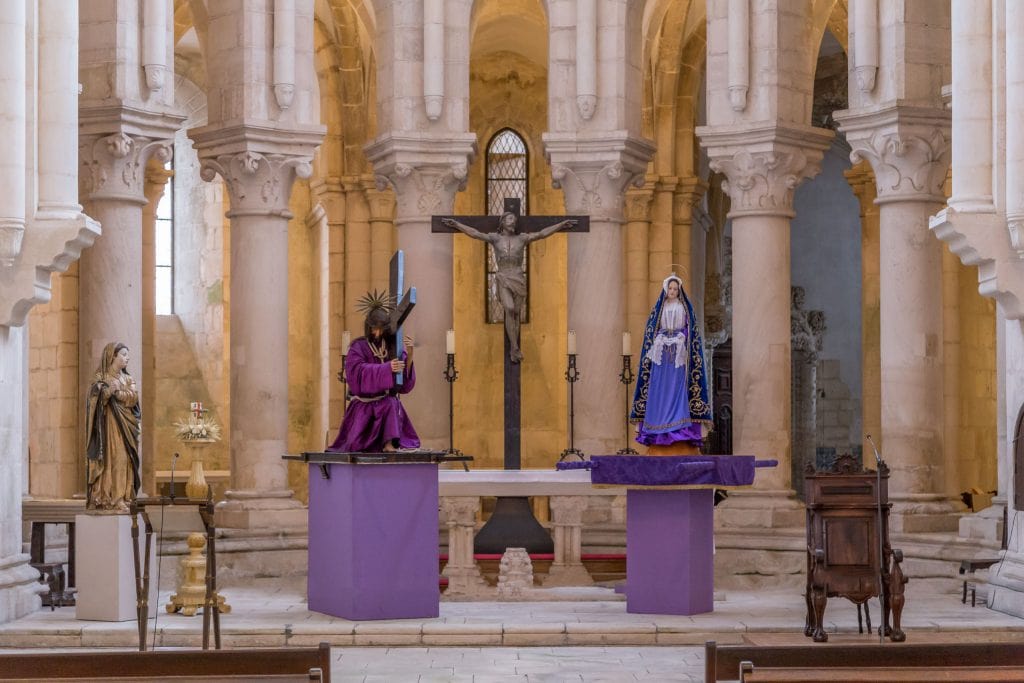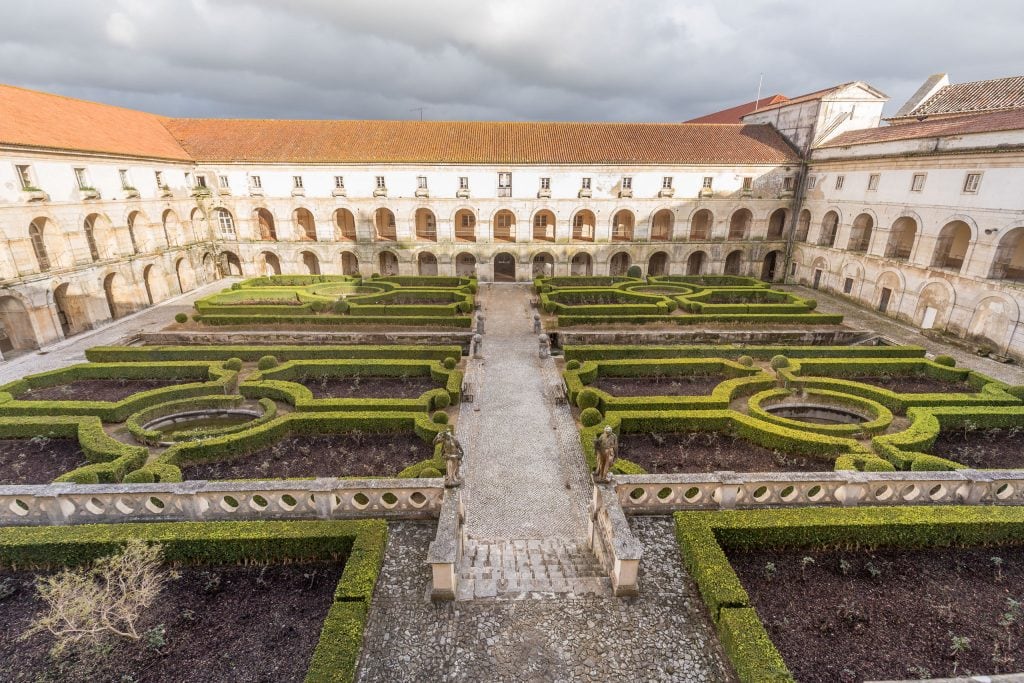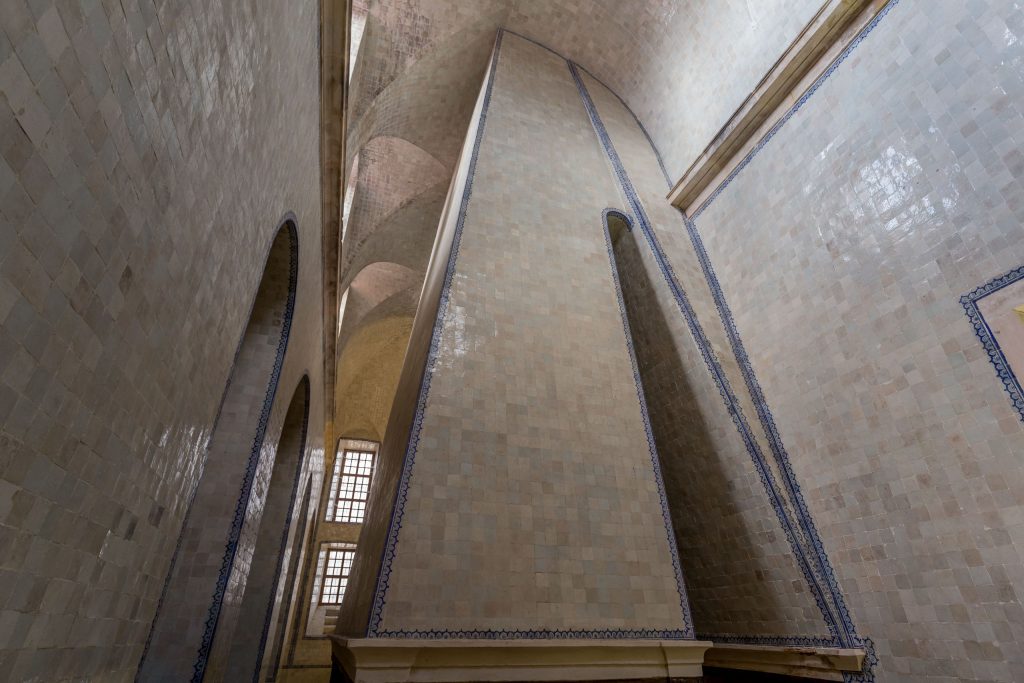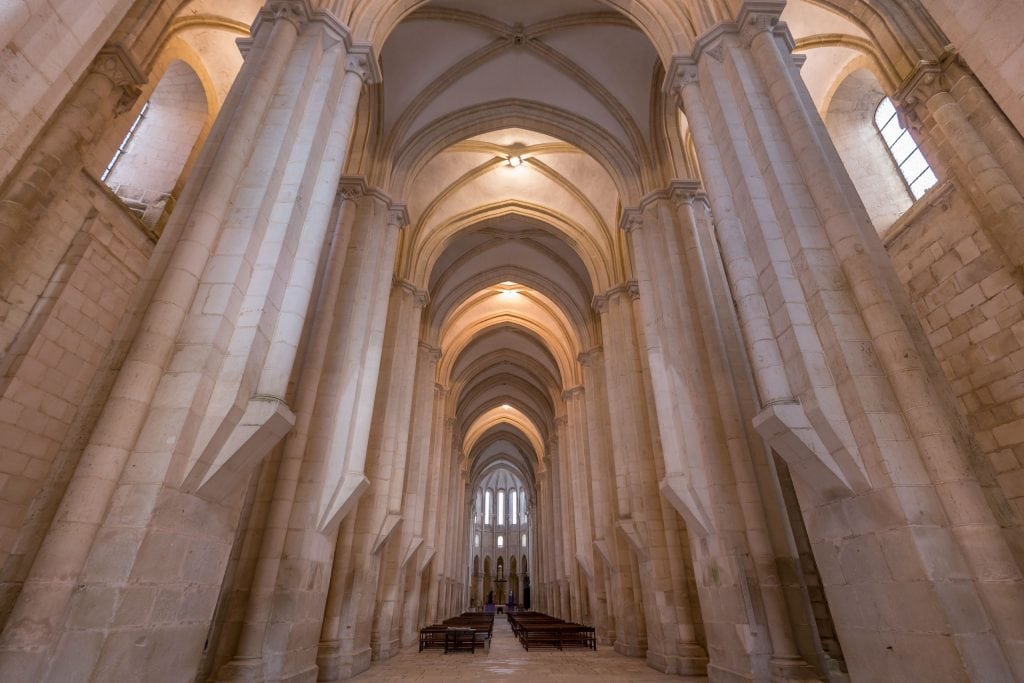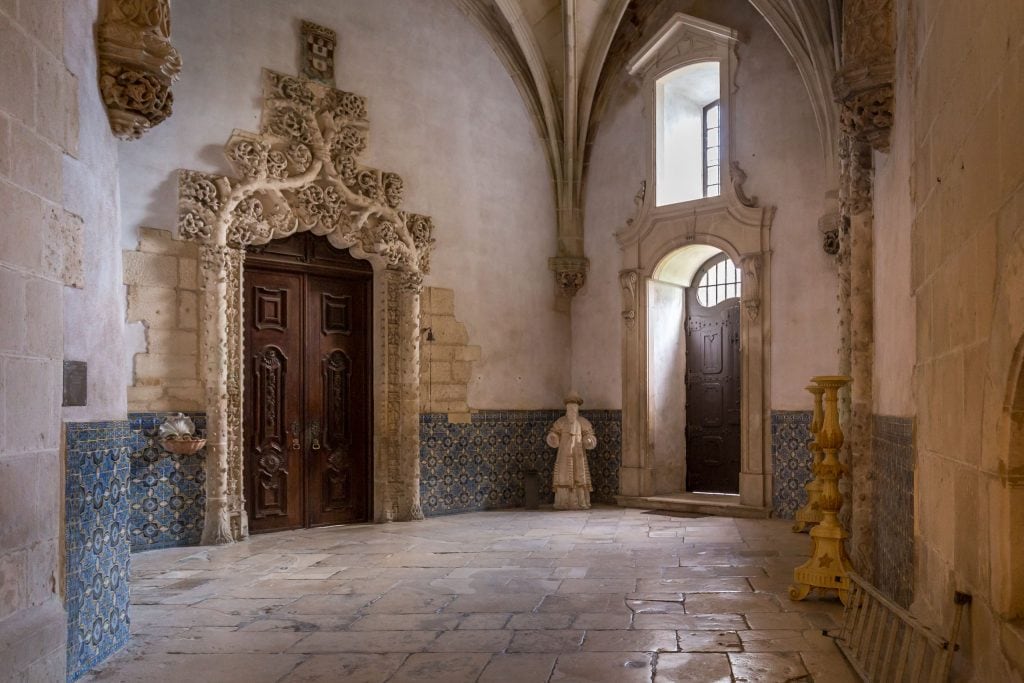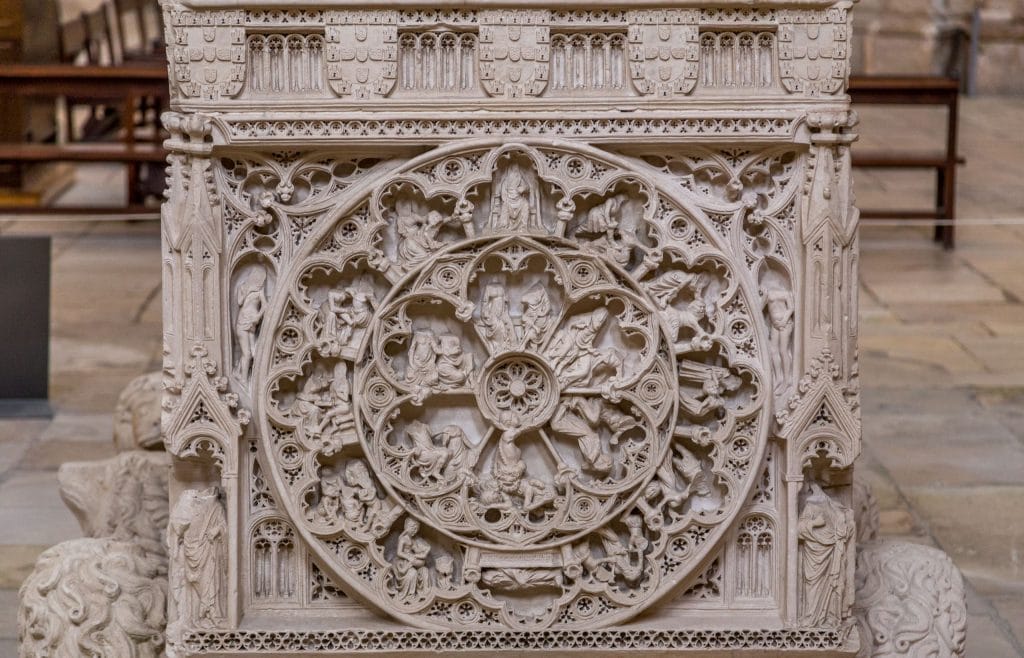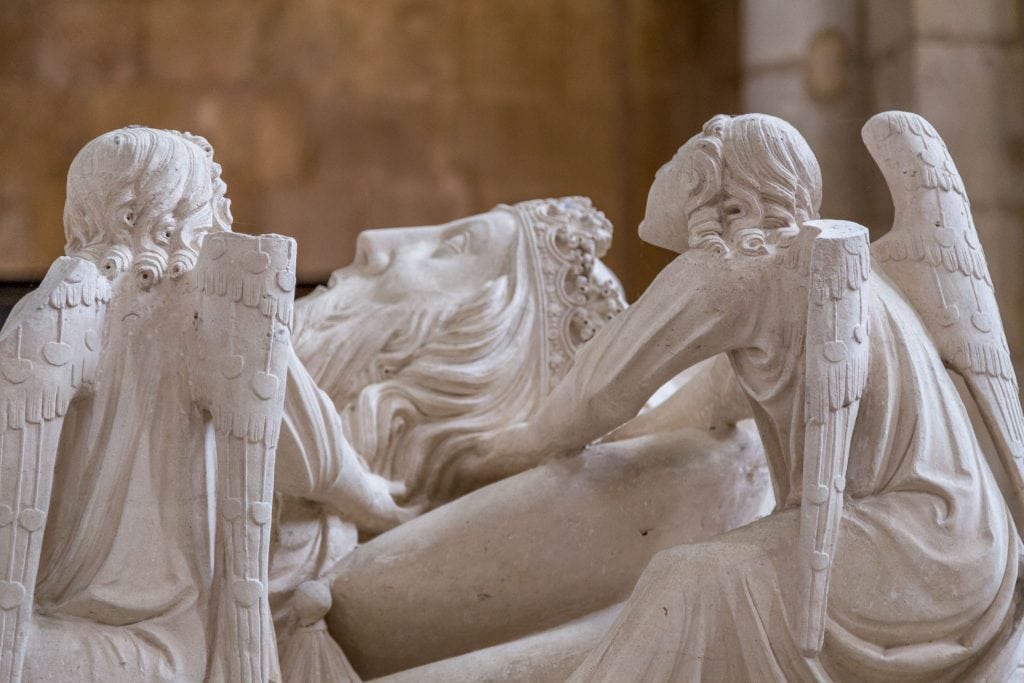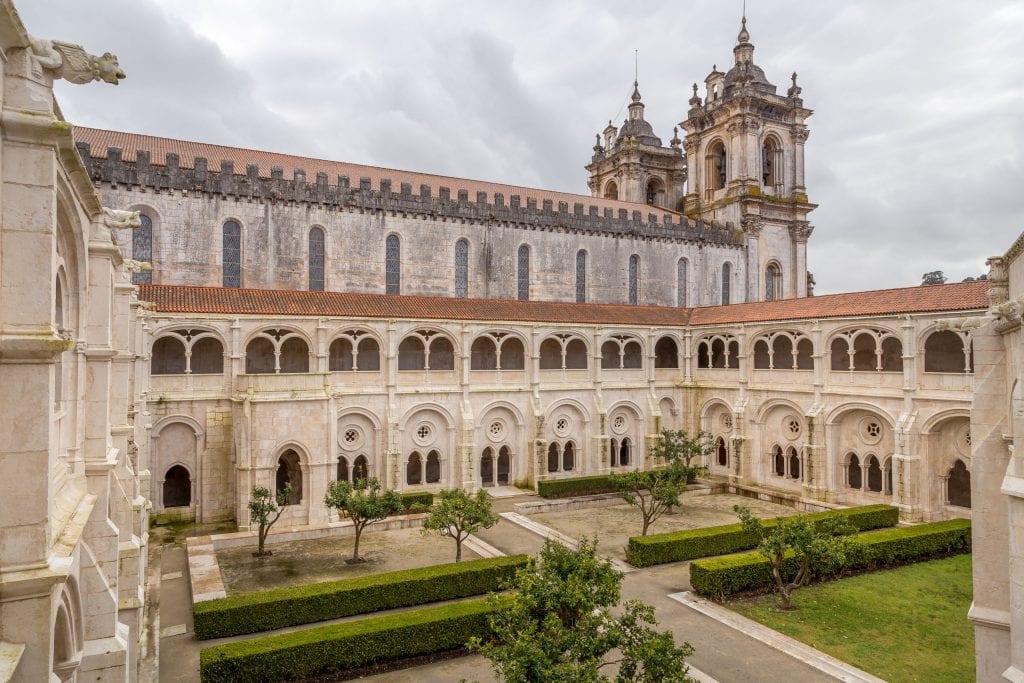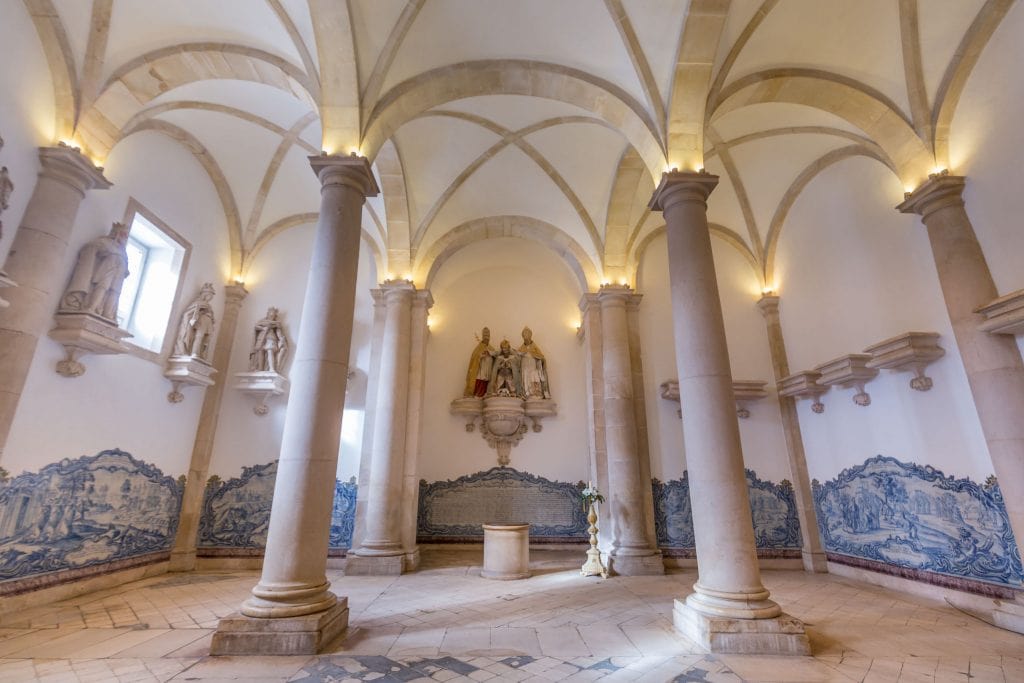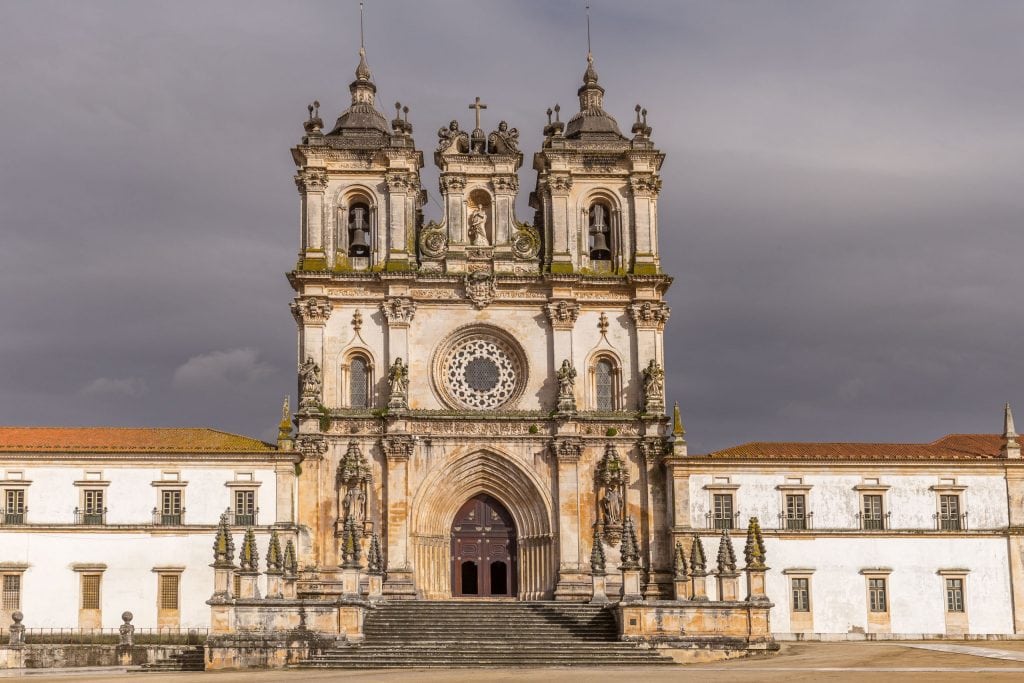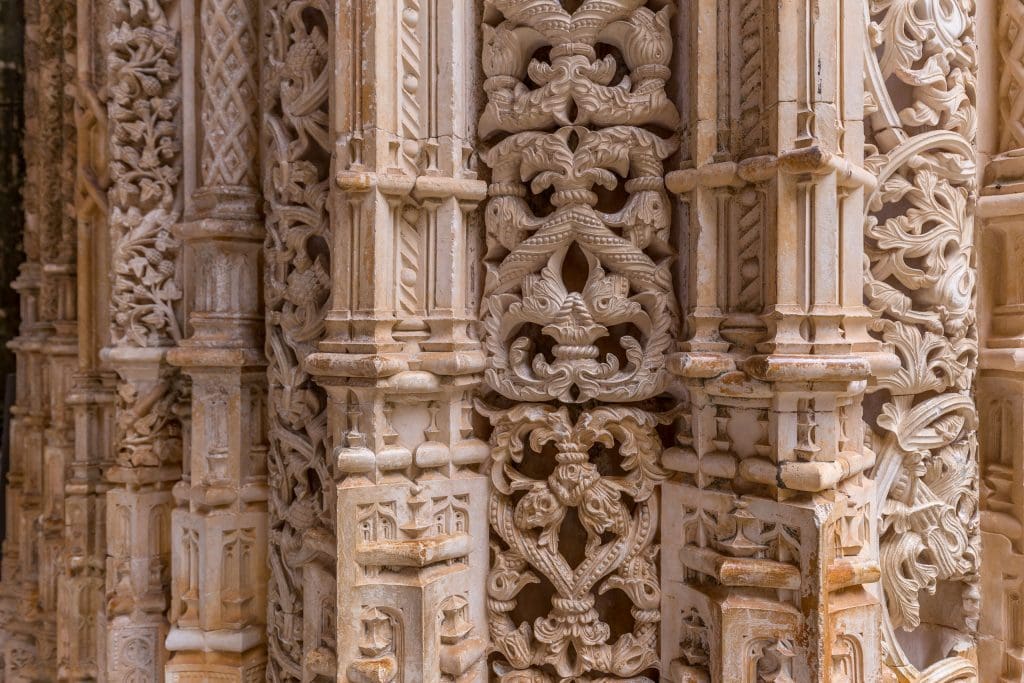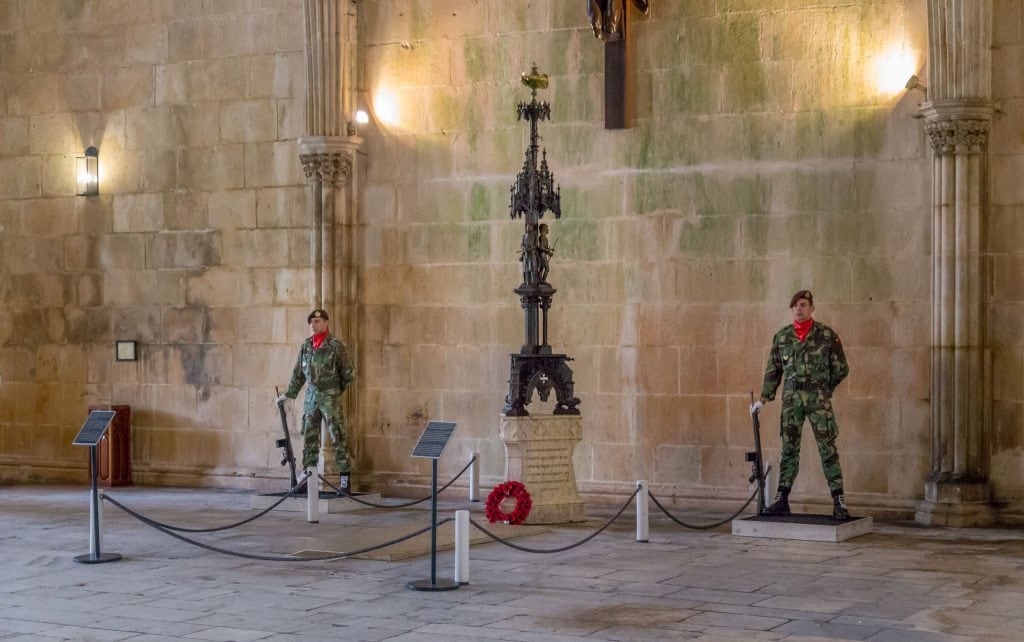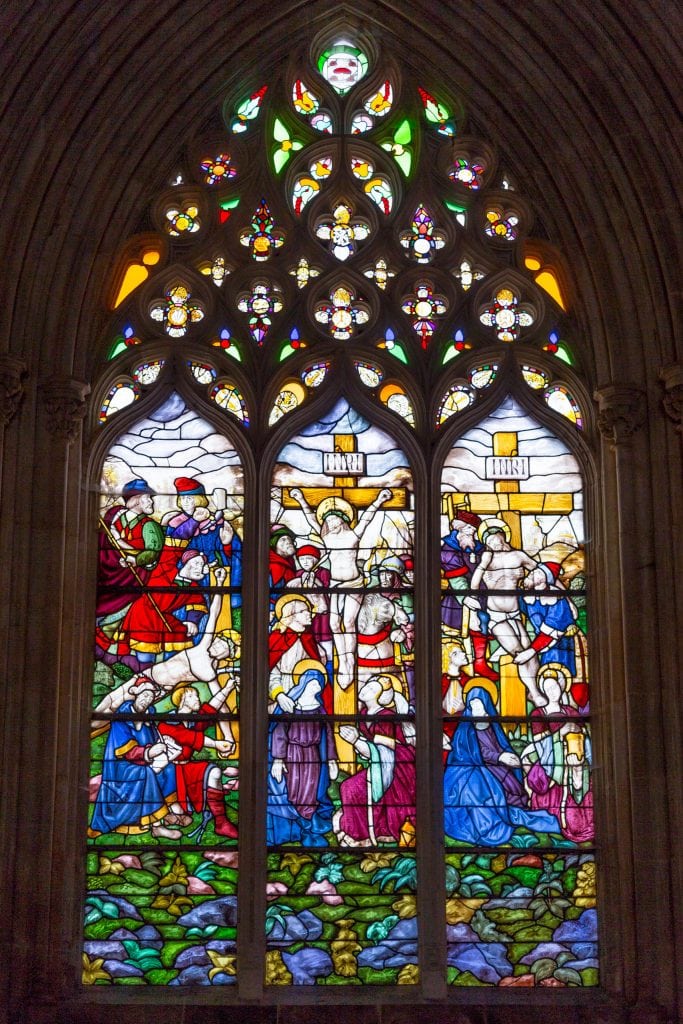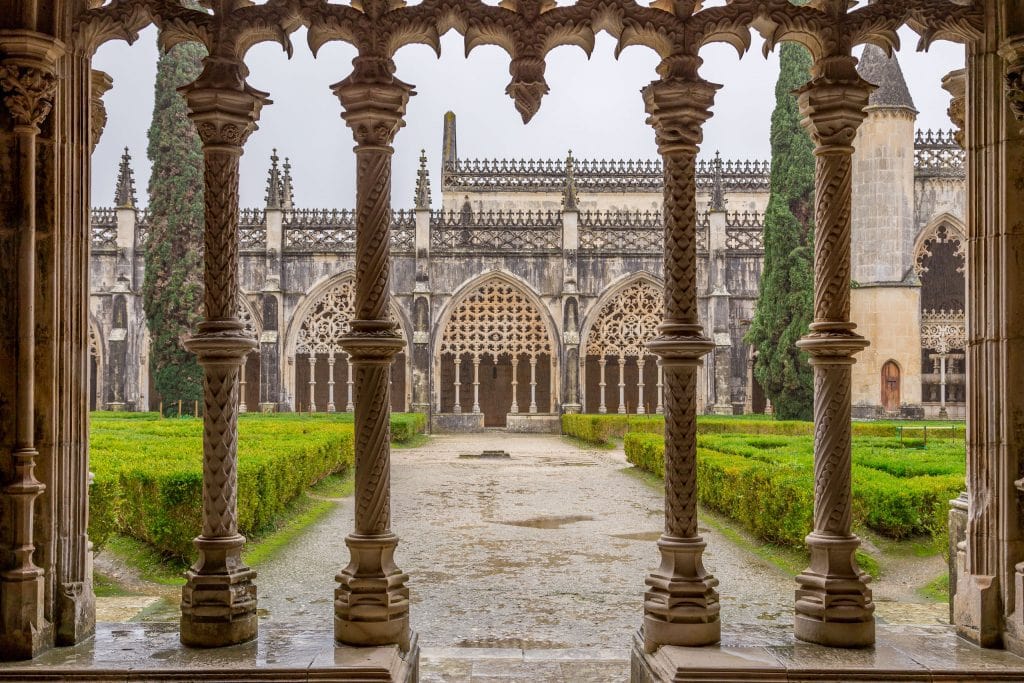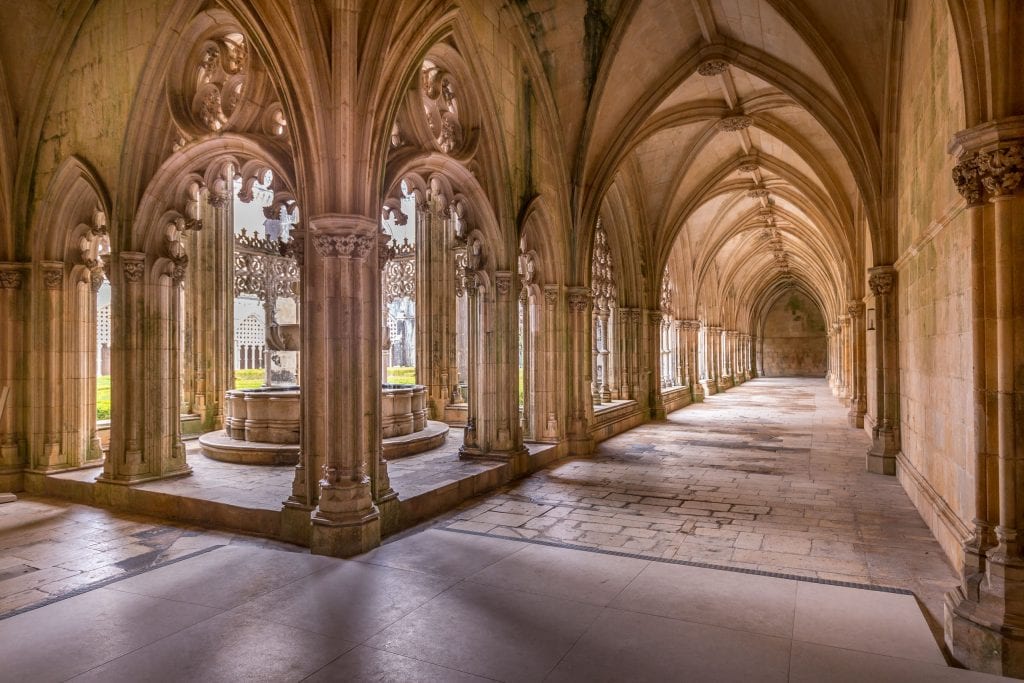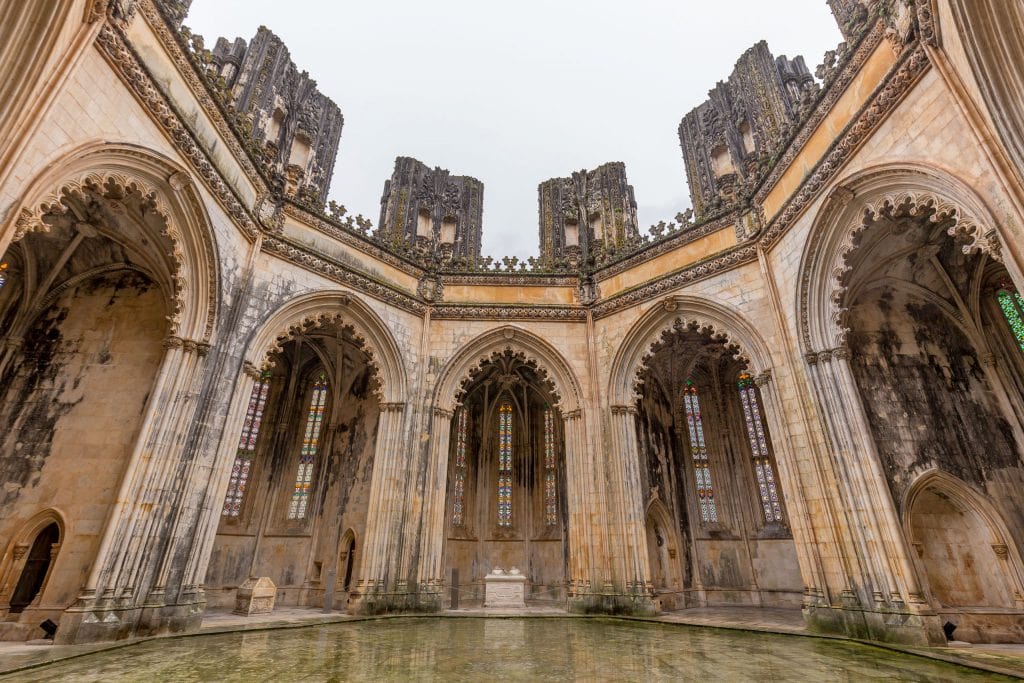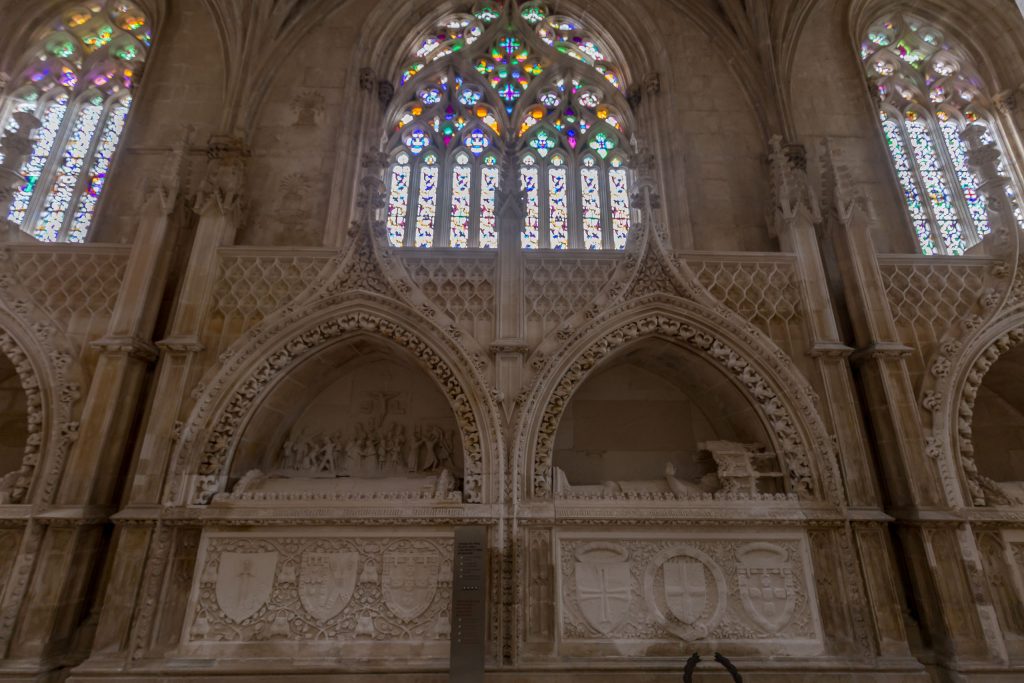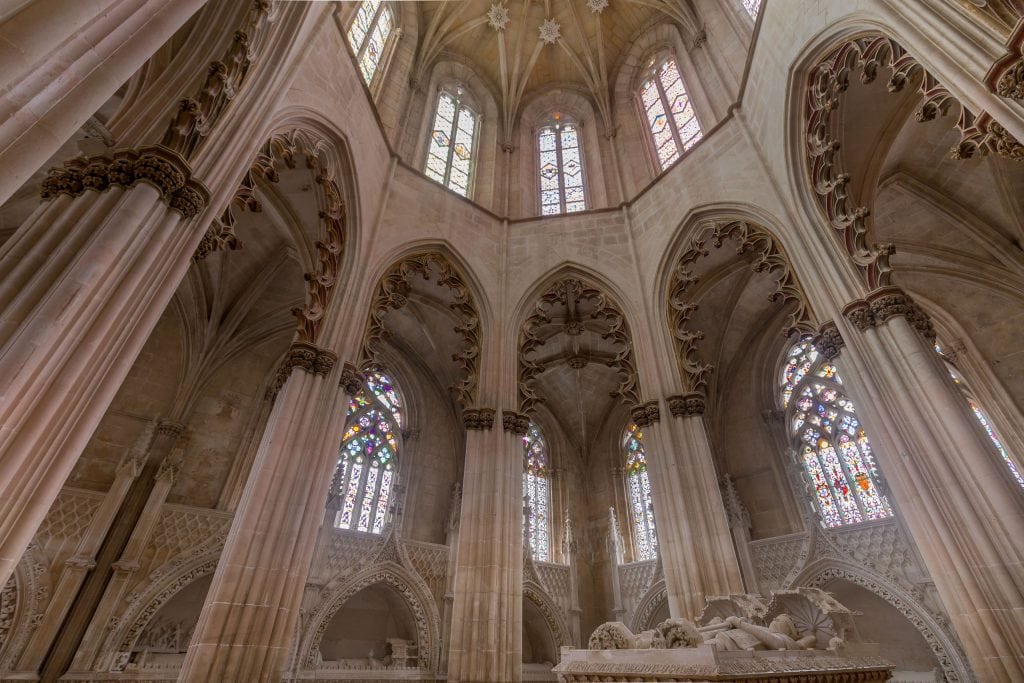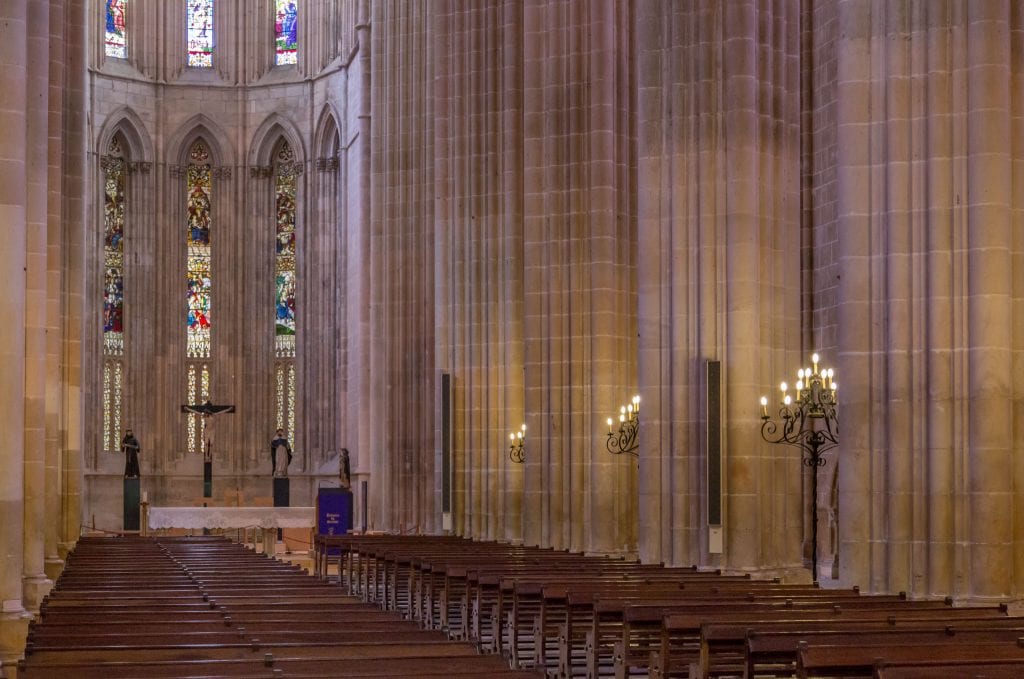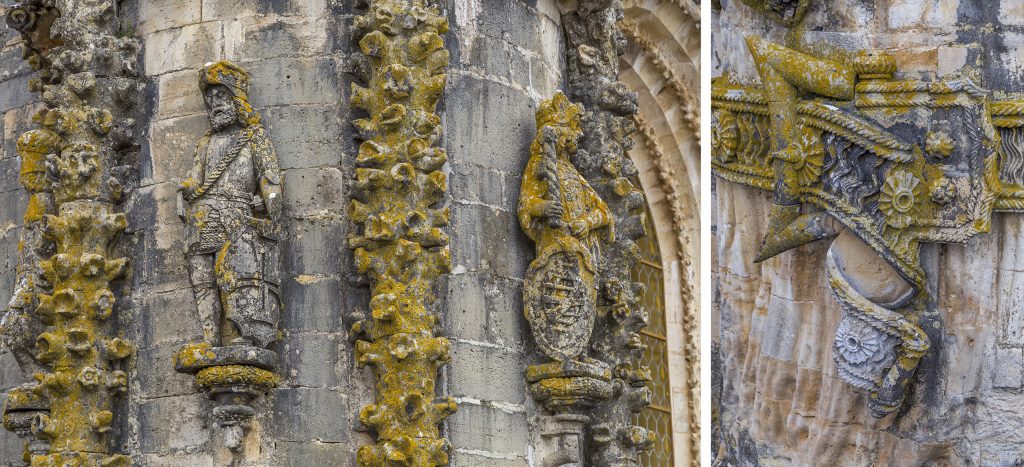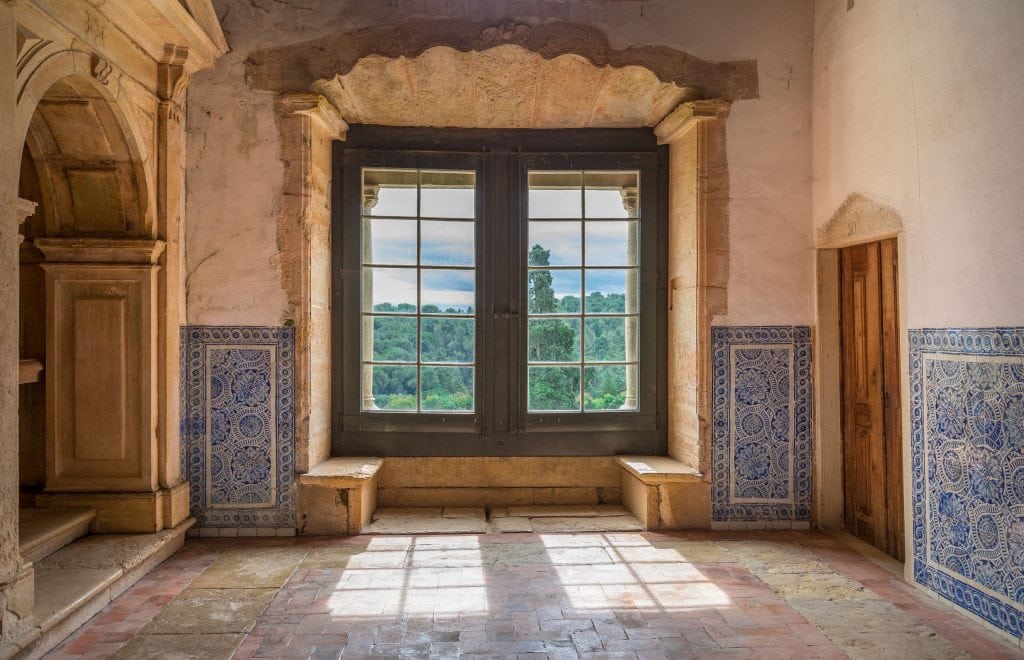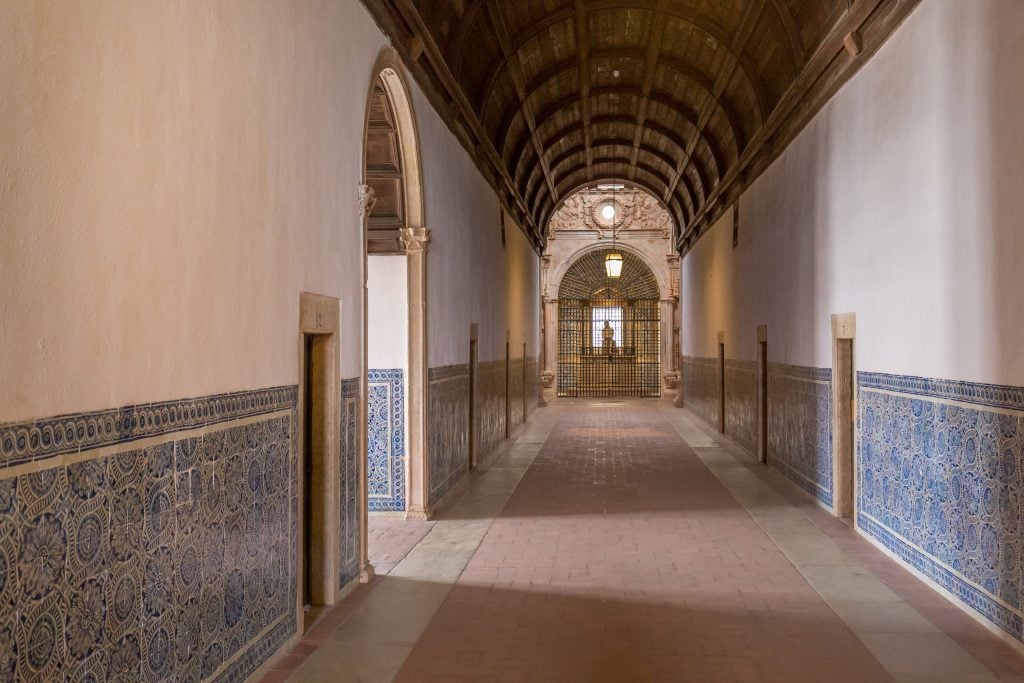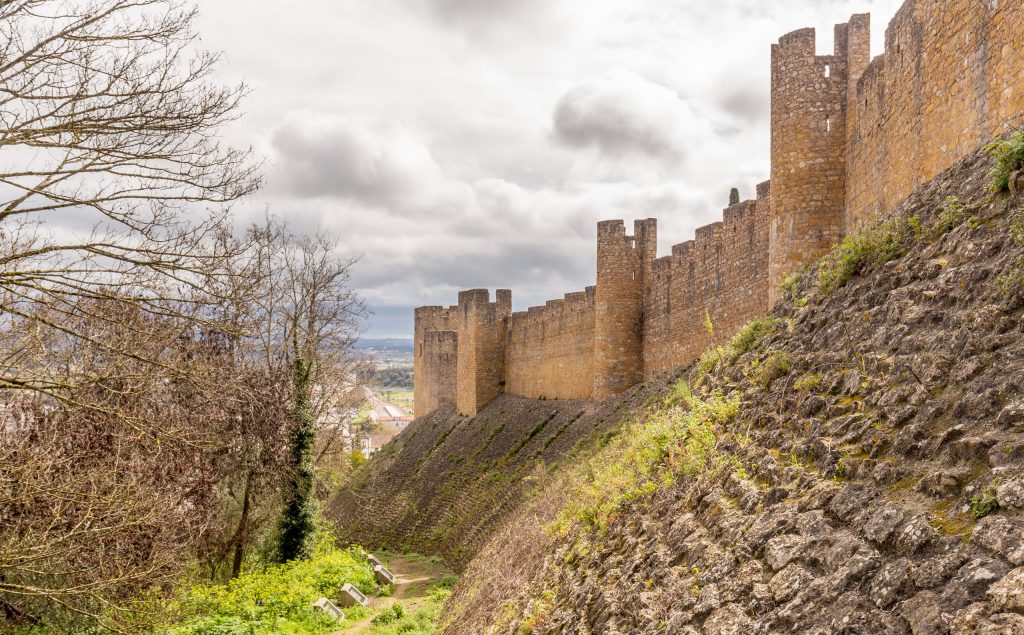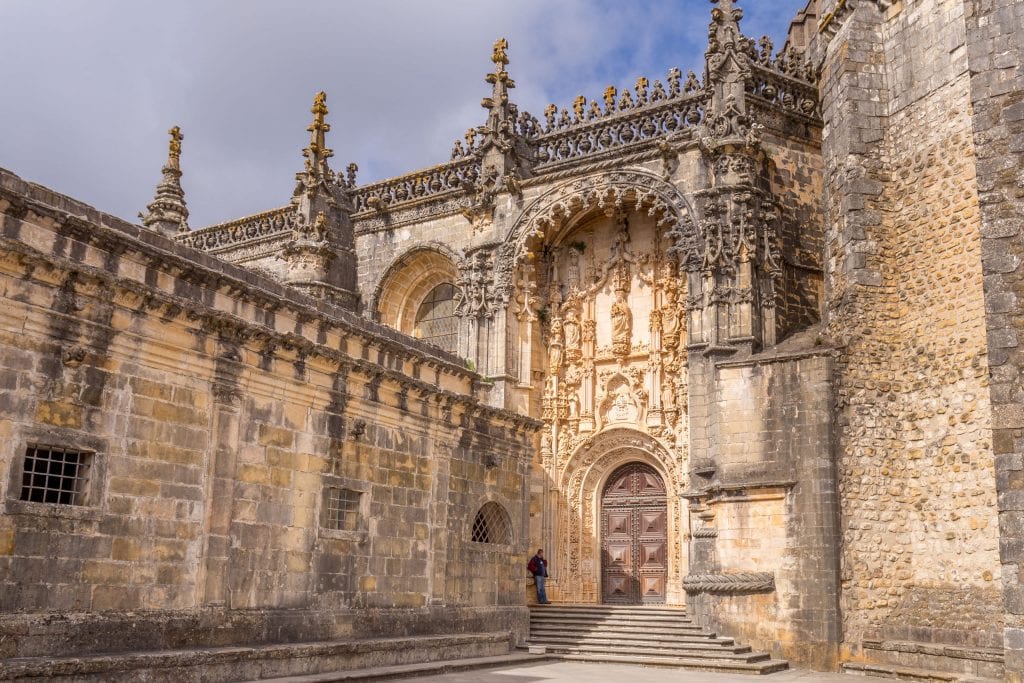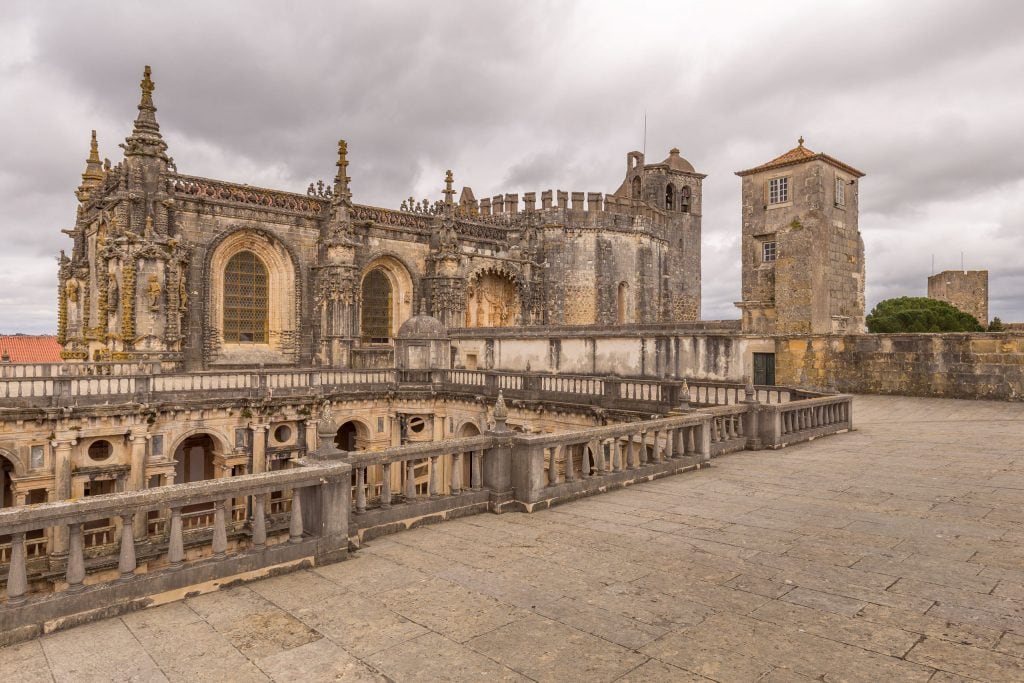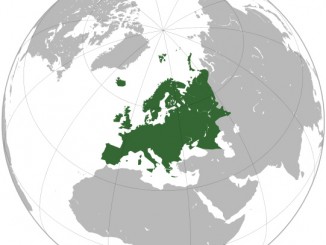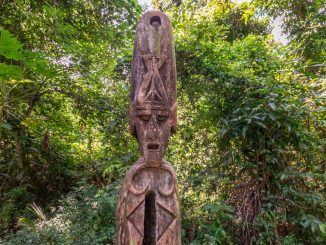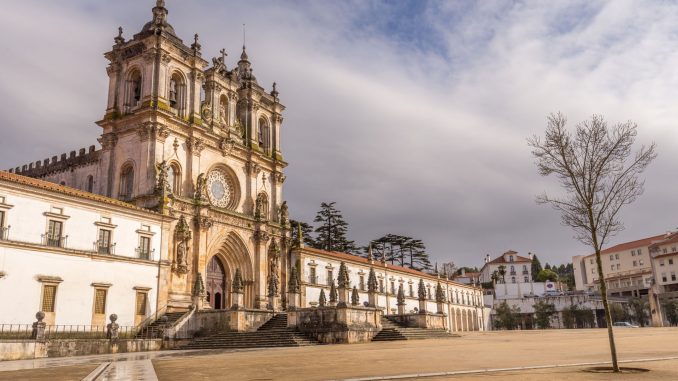
Table of Contents
North of Lisbon you’ll find three monasteries which are UNESCO World Heritage Sites. They are called the Convent of Christ in Tomar and the monasteries of Batalha and Alcobaça. It’s possible to visit all three in a day trip from Lisbon and that’s exactly what I did. If you plan to visit all three in a day you won’t have much time to explore the cities itself but these are standard Portuguese towns. You can also do just one as a day trip.
I started early morning from the Intercontinental Estoril hotel and drove to Tomar first. I then continued to Batalha and Alcobaça; it was a rainy day. Join me to these century old monasteries which are all a must-see places to add on a Portugal itinerary.
Tomar – Convent of Christ day trip
When I arrived at the Convent of Christ in Tomar it looked deserted which could be due to the bad weather that day. One point upfront: make sure to make pictures as you walk through the complex as you’ll exist at the other side. It’s a huge complex consisting of the old Templar buildings, church and 8 (!) cloisters around it: a must see.
Templar buildings
At the entrance, you’ll notice the old fortified Templar wall and castle which date to the mid-12th century. From a distance, you can see the exterior of the Romanesque round Templar church with its 16 sides and bell tower. These are the oldest parts of the complex dating to the same time as the walls. The cloisters all date to the 15th and 16th century.
PORTUGAL – Lisbon to Porto: The perfect Portugal itinerary for 7-10 days
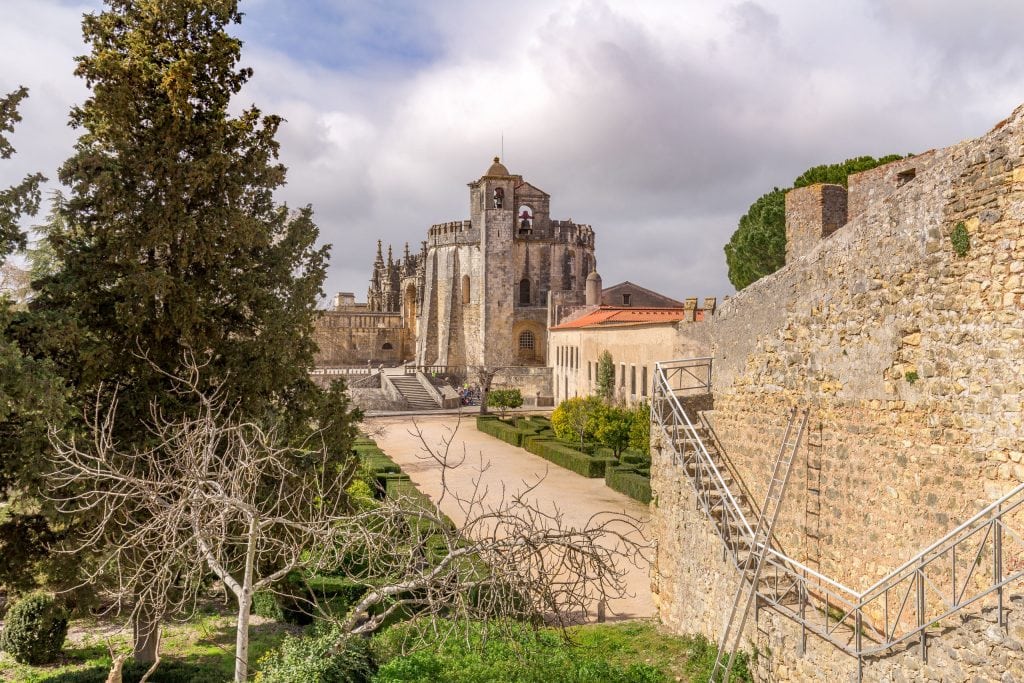
Cloister of the Cemetery
After entry, which is at the right side of the Templar church you’ll enter first the Cloister of the Cemetery which is recognized by all the blue tiles. In one corner, you’ll find the tomb of Diogo da Gama which is decorated completely with blue tiles and dates to the 16th century (see photo in gallery). After the Templars lost power the convent was transferred to the Order of Christ, hence the name Convent of Christ. This cloister was the burial site of the monks and knights of the order before it got demilitarized and transformed into a religious order. Continue from here to another cloister next to it and then backtrack to the round Templar church.
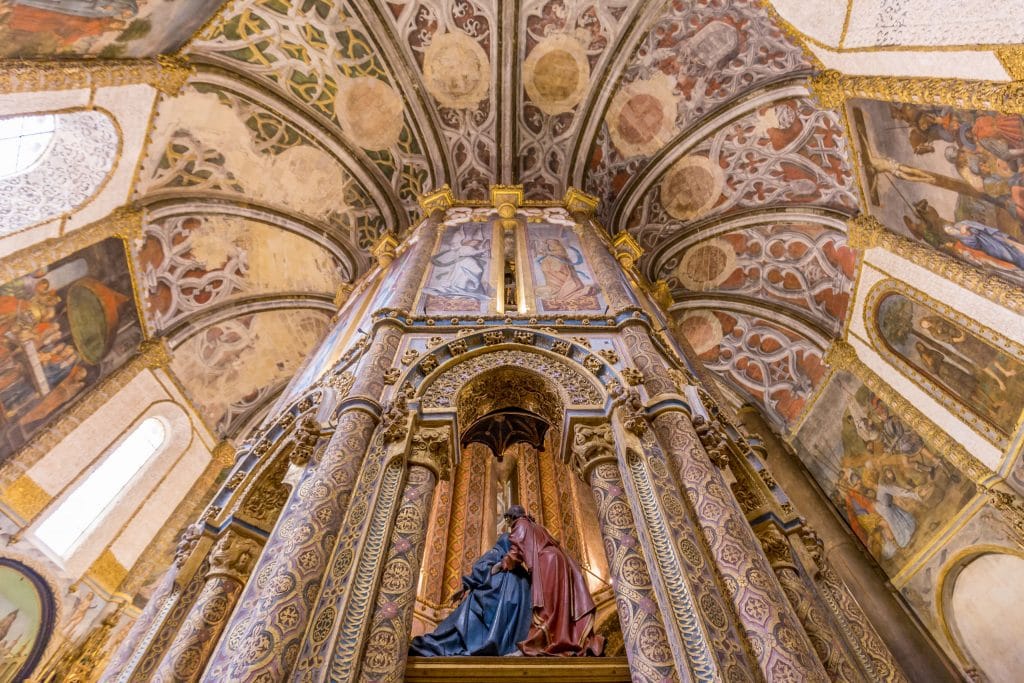
Round Templar Church
The interior of the round Templar church is one of the most beautiful parts of the Convent of Christ in Tomar. Unlike the 16-side outside wall the inside is an octagonal structure and beautiful decorated with religious paintings and sculptures. These, however, don’t date from the time of the Templars but were added in the early 16th century. Arches from the outside wall form a corridor around the ambulatory in the middle which is also heavily decorated with images of Christs life. Only this round church is part of the Templar time; the adjacent nave and choice were added in the 15th century. I spend probably 30 minutes in this rather small church but the decorations were so beautiful that it took time to absorb all this beauty. In the following picture, you can see what I mean.
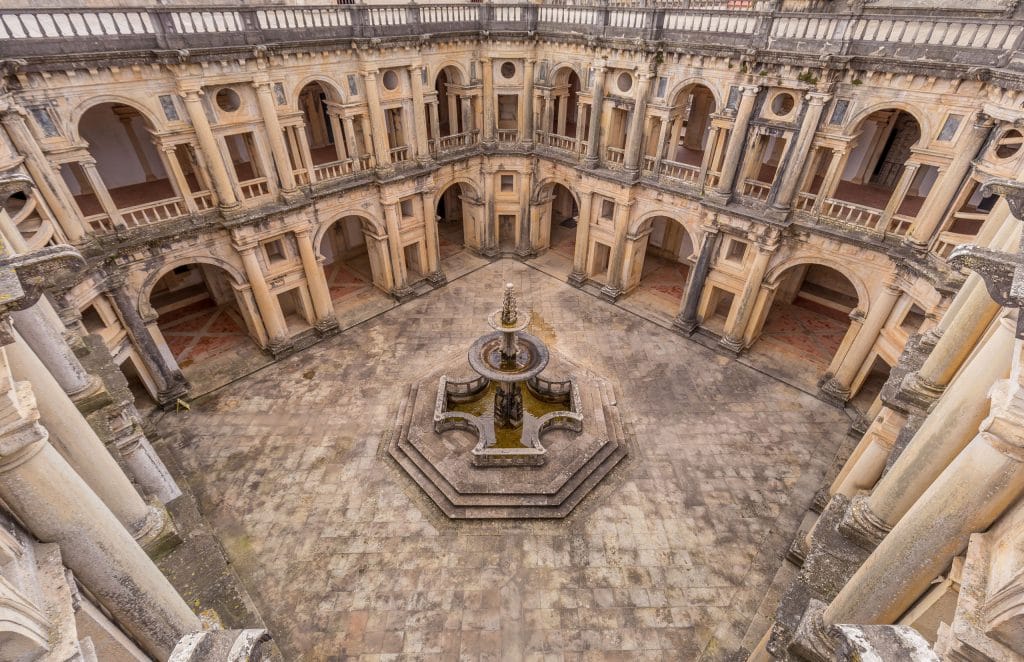
Cloister of John II
Before getting into some details of the nave, which are mainly at the outside, we’ll first explore another cloister called the Cloister of John II. This cloister is a two-story cloister with beautiful arches around the courtyard. The helicoidal stairways in the corners are typical and it’s a beautiful example of Mannerist architecture. Before continuing to the dormitories first go to the top and have a look at the Manueline window and entrance of the nave of the church. From there go to the Saint Barbara’s Cloister which gives the best view on the window.
PORTUGAL – Lisbon to Porto: The perfect Portugal itinerary for 7-10 days
Manueline window (Chapter House)
The Manueline window (see photo below) is called the Window of the Chapter House and the best example of Manueline stone sculpture at the Convent of Christ in Tomar. It’s decorated with beautiful details depicting the sea power status of Portugal. One thing I noticed on several parts of the complex was all the moss which, I think, isn’t the best for the preservation of the sculptures. From the Manueline window continue back through the previous cloister to the dormitories of the monks adjacent to it.
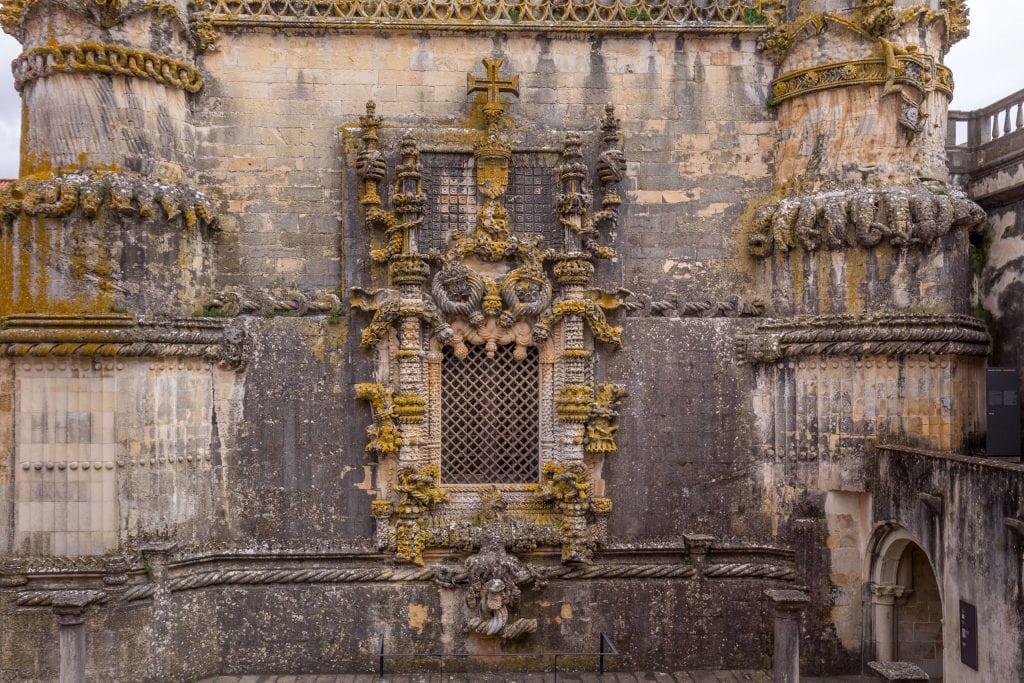
Cloisters & Dormitories
The dormitories of the monks made me sad: they are small. I would never be able to spend much time in such a small room. The corridors of the dormitory are also decorated with blue tiles which is something you’ll see everywhere in Portugal from Lisbon to Porto. After the dormitory, you’ll pass several other cloisters and a kitchen which are, in my opinion, of less interest. Finally, I spend about 3 hours at the Convent of Christ in Tomar which made me hurry to my next must see destination the Batalha Monastery.
Batalha Monastery day trip
I did speed a bit but about 30 minutes later I was at the Batalha Monastery, or also called the Monastery of Saint Mary of the Victory. The Batalha Monastery can be divided in several parts: the church, the unfinished chapel, the founders chapel, chapter house and two cloisters. You’ll find various building styles within the monastery as its construction took more as a century and was carried out by various architects. I explored the outside just shortly as it was pouring rain but I can say it’s beautiful decorated with Manueline decorations.
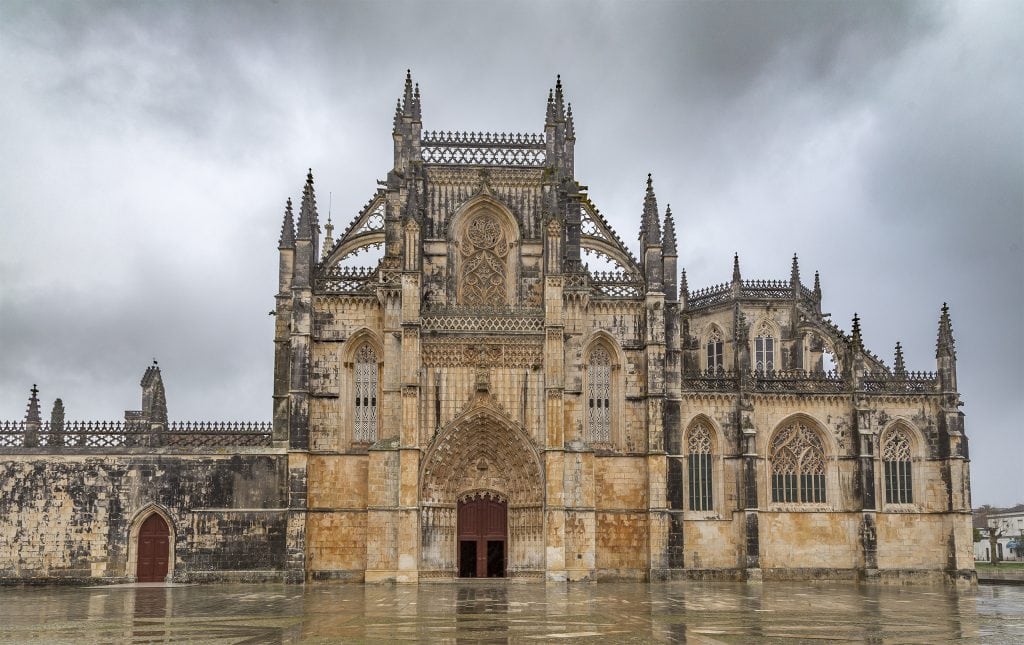
The Church
The nave of the church is very small compared to the height and lacks decorations. The founders chapel can be accessed from the nave and is home to various tombs of the Portuguese royal family. Most notably is the tomb of John I of Portugal and his wife Philippa of Lancaster which stand in the middle. In the naves around you’ll see various other tombs. I really enjoyed this room as it’s beautiful decorated with arches, sculptures, and stained glass windows.
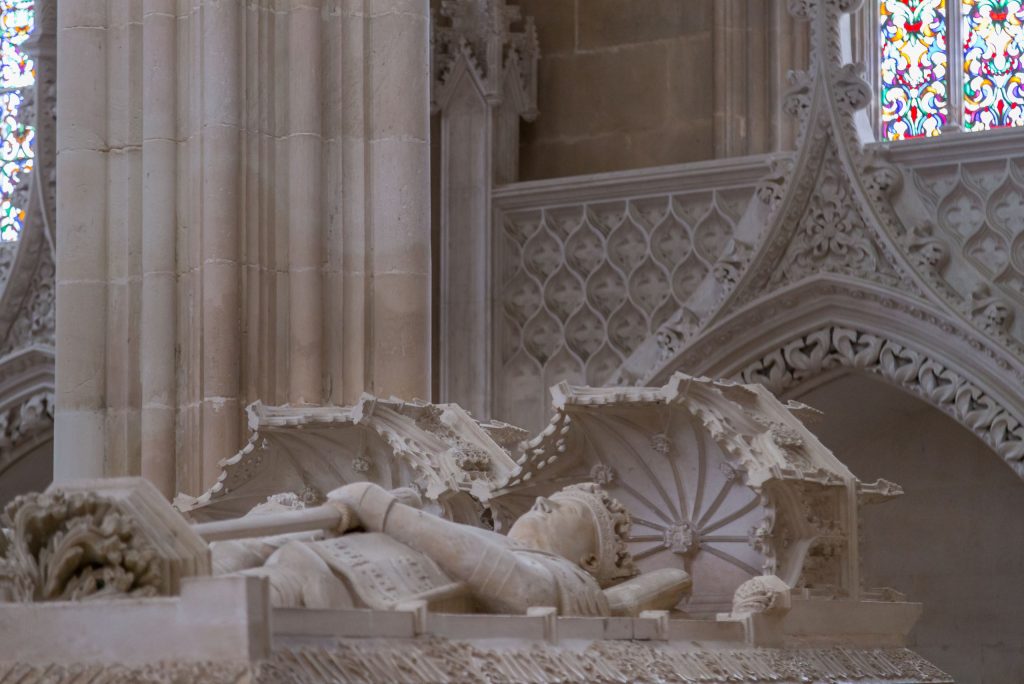
Royal Cloister
I continued to the Royal Cloister which was built about a century later in Gothic style. The chapter house is also accessible from the Royal Cloister. In the chapter house, you can see the tomb of the unknown soldiers and is guarded by two guards all the time. The stained-glass window is one of the first in Portugal and a very nice one. I walked around the cloister for about 15 minutes as I was a bit in a hurry. When I was admiring the Lavabo in the corner with fountain and basins the guards started to change shift. Once they finished I continued for a quick look at the Cloister of King Afonso which, with much less decoration, wasn’t that interesting to look at for a long time.
PORTUGAL – Lisbon to Porto: The perfect Portugal itinerary for 7-10 days
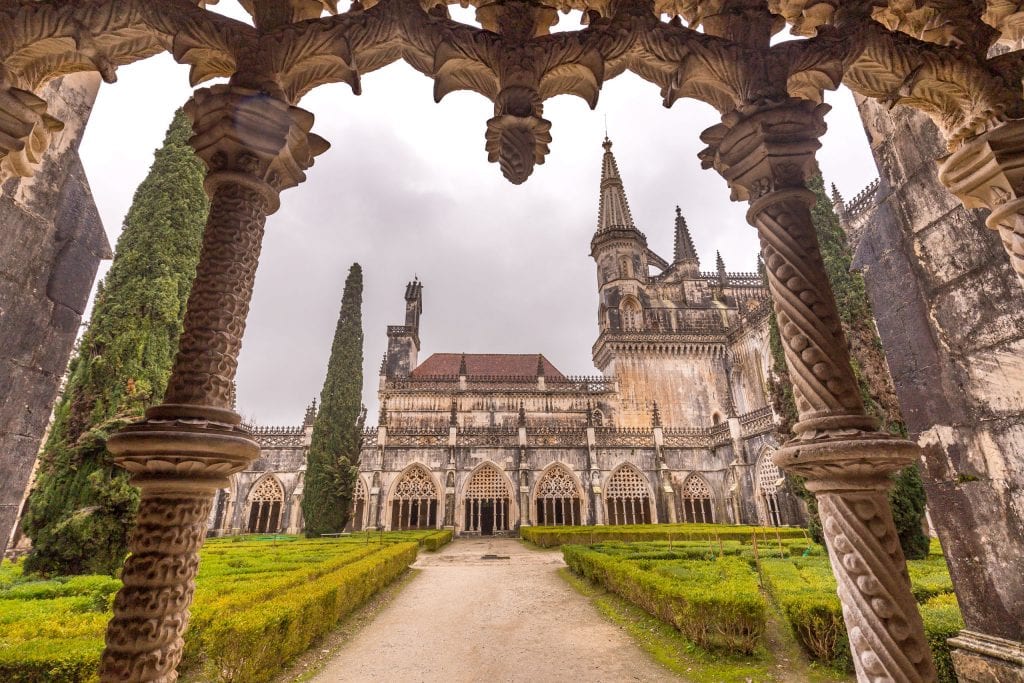
Unfinished Chapels
Once outside I walked partly around the monastery to enter the unfinished chapels which can only be accessed from the outside. These remind us that the monastery was never finished. The unfinished chapels should have been a second royal mausoleum but only King Edward of Portugal and his wife Eleanor of Aragon are buried here. Even though not finished the Manueline decorations are plentyful and beautiful. I hurried back to my car to drive to my last stop of the day: the Alcobaça Monastery, another must see UNESCO World Heritage Site in Portugal.
Alcobaça Monastery day trip
About 30 minutes later I arrived by car at the Alcobaça Monastery. It’s a large building with two wings and a church in the middle. Built from the mid-12th to the mid-13th century.
The Church
The church doesn’t have that much decorations but the royal tombs in the transept have. They are the tombs of King Pedro I and his mistress. These tombs are really interesting as they have so much detail. I loved the room of the kings too with statues of all the kings and blue tiles telling the history of the Alcobaça Monastery. From there I entered the cloister.
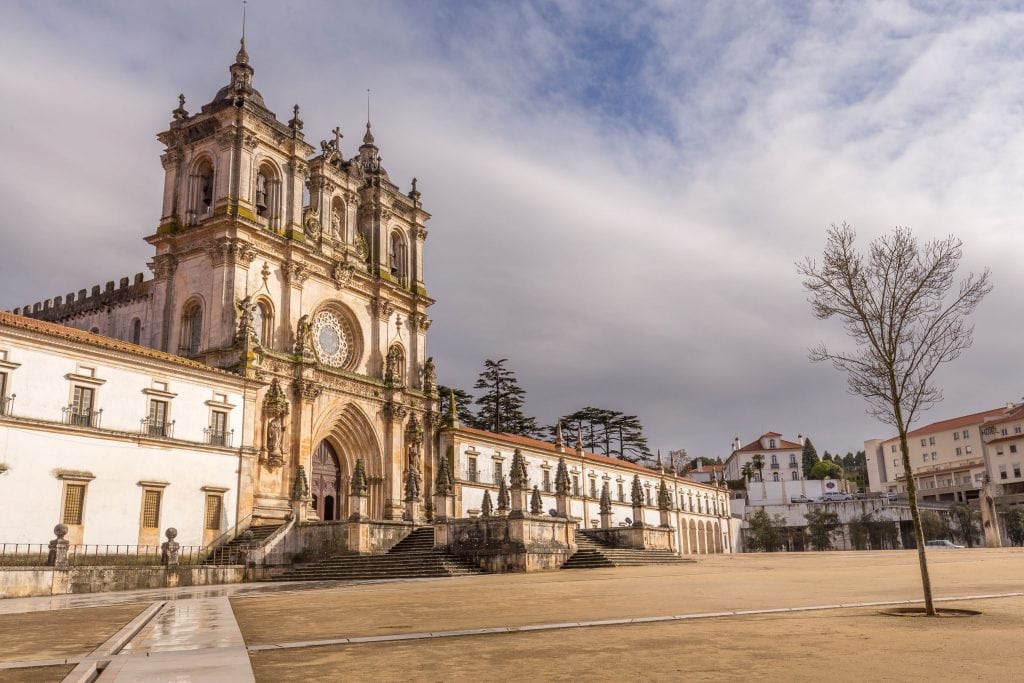
The Cloister
The cloister has two stories of which the second floor was built about three centuries later in the 16th century. It’s a big cloister and takes some time to explore and if you go to the “viewpoint” you’ll have a beautiful view on the courtyard and church behind it. Behind the cloister is another cloister which wasn’t accessible except a balcony from the dormitory. Most interesting I found the kitchen which was built in such a way that fish and water was diverted from the river directly into the kitchen. It’s completely decorated with blue tiles including the huge chimney. After an hour, I had seen most, if not all, of the Alcobaça Monastery and made my way to the exit.
PORTUGAL – Lisbon to Porto: The perfect Portugal itinerary for 7-10 days
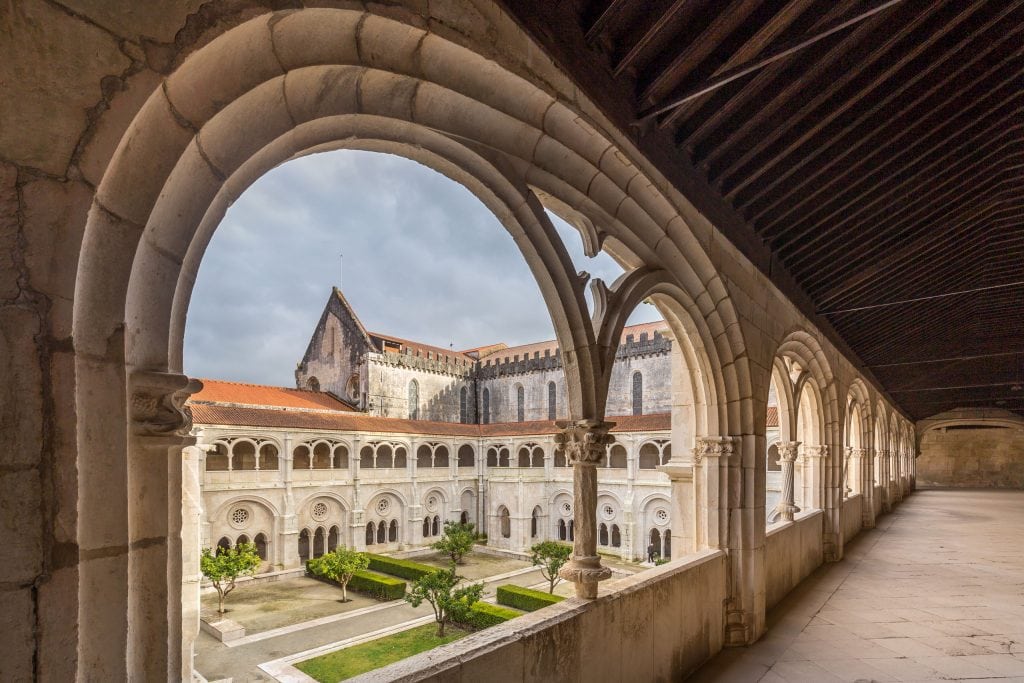
Three monasteries in a day is a lot and probably too much unless you are really into visiting all UNESCO World Heritage Sites as I do. The Convent of Christ in Tomar cannot be skipped, it’s a must see in Portugal and should be on your itinerary. Both the Alcobaça Monastery and the Batalha Monastery are too but in case you need to skip one I suggest to skip the one in Batalha. If you do, it will leave time for a nice lunch in Alcobaça as the monastery is located within walking distance of restaurants unlike in Tomar where the monastery is located a bit outside of the town.
I don’t regret visiting all in one day and I would do it again. It was one of the last days of my Portugal road trip and I had only two days in Lisbon left. I already visited Porto, Guimarães and Coimbra which are also must see places in Portugal. When I returned to Lisbon it was time for dinner. Check out my hotspot tips in Lisbon for lunch and dinner!
Stay tuned for more stories and subscribe to the newsletter or follow CTB on social media (Facebook, Twitter, Instagram including Instagram stories; on all social media you can find CTB @christravelblog) to get updated information.
Did you visit Tomar, Batalha and Alcobaça too or do you have questions? Please leave a comment at the bottom of the page. Love to hear from you!
Gallery Tomar, Batalha and Alcobaça day trip
Click an image for a full screen gallery of more photos taken during this trip. If you like to use any photo for commercial, private or editorial use please contact first for permission and/or pricing.


